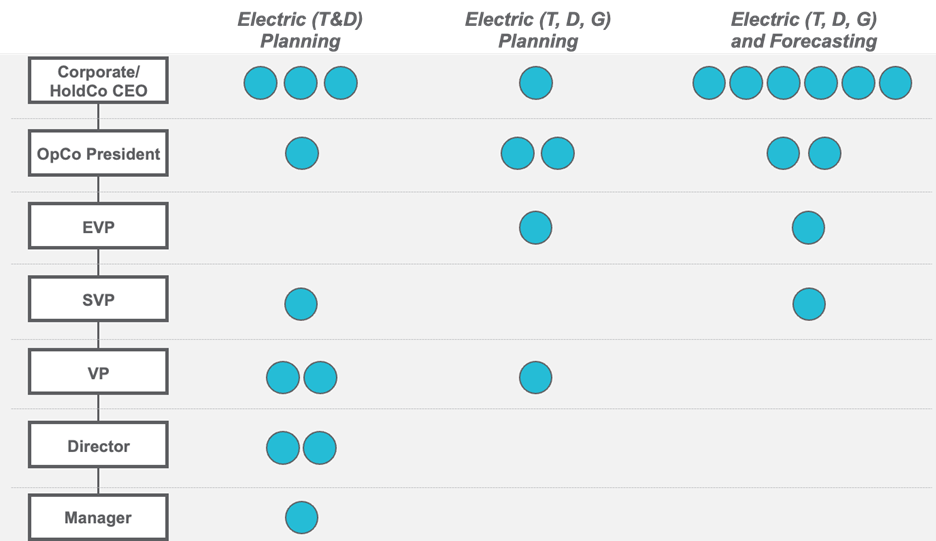
Originally published on Energy Central.
The owners and operators of electric systems are under increasing pressure to provide energy to customers that is reliable, affordable, and clean.
In the 1990s, wholesale, and in many states retail, deregulation segregated portions of the electric system in different ways across the country, leading to siloed system planning organizations. As FERC, state regulators, and other stakeholders made decisions to further reliability and affordability, the entities responsible for providing electric service—from RTOs/ISOs to local utilities—made decisions about how to plan the system to align to these two objectives. In many regions, planning functions for generation, transmission, and distribution became disconnected as they focused on optimizing within those functions for reliability purposes.
In recent years, we have added clean energy objectives to the mix as states and regions committed to net-zero GHG targets, 100% renewables, and RPS standards. In adding this third objective, the industry is finding that planning within electric siloes is insufficient. For instance, the operating characteristics of utility-scale renewable resources, and the locations where they best perform, require that the transmission system expand to accommodate them. Distributed energy resources (DERs) at the distribution level can have operational impacts on transmission assets and may ultimately impact the need for wholesale generation. FERC Order 2222 contemplates these resources playing an active role in wholesale markets.
Many utilities are recognizing that continuing to plan within generation, transmission, and distribution rather than across these functions and assets will lead to suboptimal results in the areas that the industry cares most about—reliability, affordability, and clean energy. This brings us to the question of why it is difficult to plan across these functions. As previously mentioned, these functions were often separate for very good reasons, whether that be market structures and the divestiture of generation in wholesale markets or regulatory constructs that incentivized separation of transmission (e.g., formulaic ratemaking and incentive treatment). We now have a system that is often optimized within discrete functions. These may have different rate treatments and the assets may have different owners. In some cases, transmission and distribution have different ratemaking constructs and even different ROEs, incentivizing investment in one set of assets or the other.
The way we plan the electric system needs to evolve to accommodate both new requirements and new resources (renewables, DERs), and this new paradigm is often referred to as integrated system planning. This approach increases coordination between system planning processes that have been largely siloed with a goal of planning infrastructure to concurrently meet reliability, affordability, and decarbonization objectives. There is no one way to implement integrated system planning, but some common approaches include more organizational alignment of planning functions, updated and better aligned processes, and advanced tools that allow for the evaluation of disparate system impacts. The focus of this article is organizational considerations.
How Are These Functions Organized Today?
In a recent study performed by ScottMadden, we examined the organization structures through which planning is performed and found the following:
- For companies that own generation, transmission, and distribution, the first place in the organization that those planning functions have a common executive varies significantly and may not be until the president or CEO. In many companies, transmission and distribution report to separate executives, again lacking a common executive until the most senior levels. Put another way, the ultimate arbiter for alignment or coordination across these functions is often one of the most senior executives in the company.
- In some cases, as with independent transmission companies or generation and transmission cooperatives, the executives leading transmission and distribution planning may reside in entirely different companies.
- Load forecasting is often outside planning organizations and may report into organizations such as regulatory or finance.
- At the other end of the spectrum, we found a handful of companies where transmission and distribution report to a lower level in the organization (VP or below), and these groups actively work to coordinate transmission and distribution solutions to the benefit of customers and reliability. Importantly, in one case, the VP of T&D planning rationalized solutions across the two portfolios of projects to make sure that company’s overarching goals were being met.
- One company had organized all of their planning functions (generation, transmission, and distribution) under a single VP in order to begin aligning planning practices.
The graphic below, developed from ScottMadden’s benchmarking of integrated system planning, illustrates the first level in the organization into which the identified functions report. The left column shows transmission and distribution, the middle column adds generation, and the third column includes electric planning and load forecasting.

Myriad studies are underway to determine how best to address these disconnects across a highly complex and physically interconnected system—they attempt to solve data or process challenges or focus on a very specific question (e.g., integration of DERs into wholesale markets). The challenge in integrated system planning is knowing where to begin. As mentioned above, one company we interviewed opted to start with the organization by putting all planning functions under a single VP. Not every organization can do this.
Where to Start?
We suggest some simple questions to start:
- What is the most urgent issue to be addressed in integrated system planning? For instance:
- Optimizing spend across transmission and distribution
- Planning transmission in anticipation of the generation portfolio
- Using DER to offset the need for transmission investment
- Which organizations need to participate in performing this study?
- How can we establish governance over a study to access the right people, systems, and data?
ScottMadden recommends starting with a single use case that can be used to inform further integration of planning functions. Such a study might assess opportunities to use DERs to offset the need for transmission. In this case, even if transmission and distribution report to different executives, a team could be appointed to identify the systems, data, and people that would need to participate in this study. The learnings from this pilot could inform a plan to further integrate transmission and distribution to optimize the investment portfolio in other ways. This plan could become the initial step to integrate transmission and distribution planning.
Organizational changes are difficult. Proving out a single use case and ideally using the findings with regulators or stakeholders could both prove the value of integration and lay the groundwork for further organizational evolution.
In Conclusion
Meeting myriad objectives of the clean energy transition requires optimization of planning across, rather than within, traditional siloes. Aligning planning functions within an organization is an enabler of the integration that is needed if we are to meet our reliability, affordability, and clean energy goals.
ScottMadden is actively working with our clients to evolve utility planning and enable the clean energy transition.
Note: While this article focuses on integration of electric system planning, integration across electric and gas systems is becoming ever more urgent. We will address this topic in a separate article.



